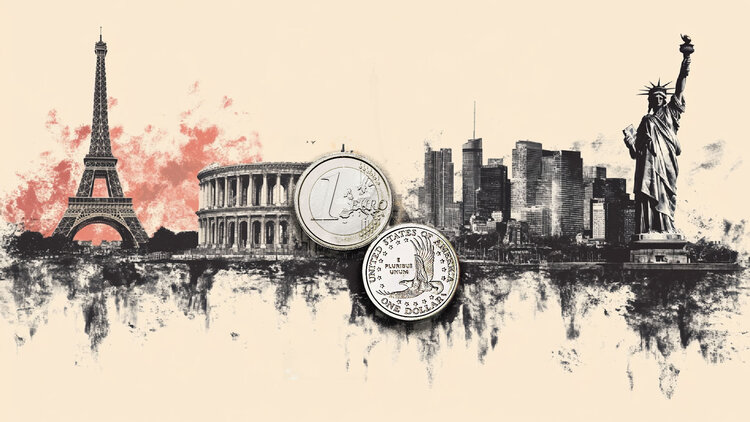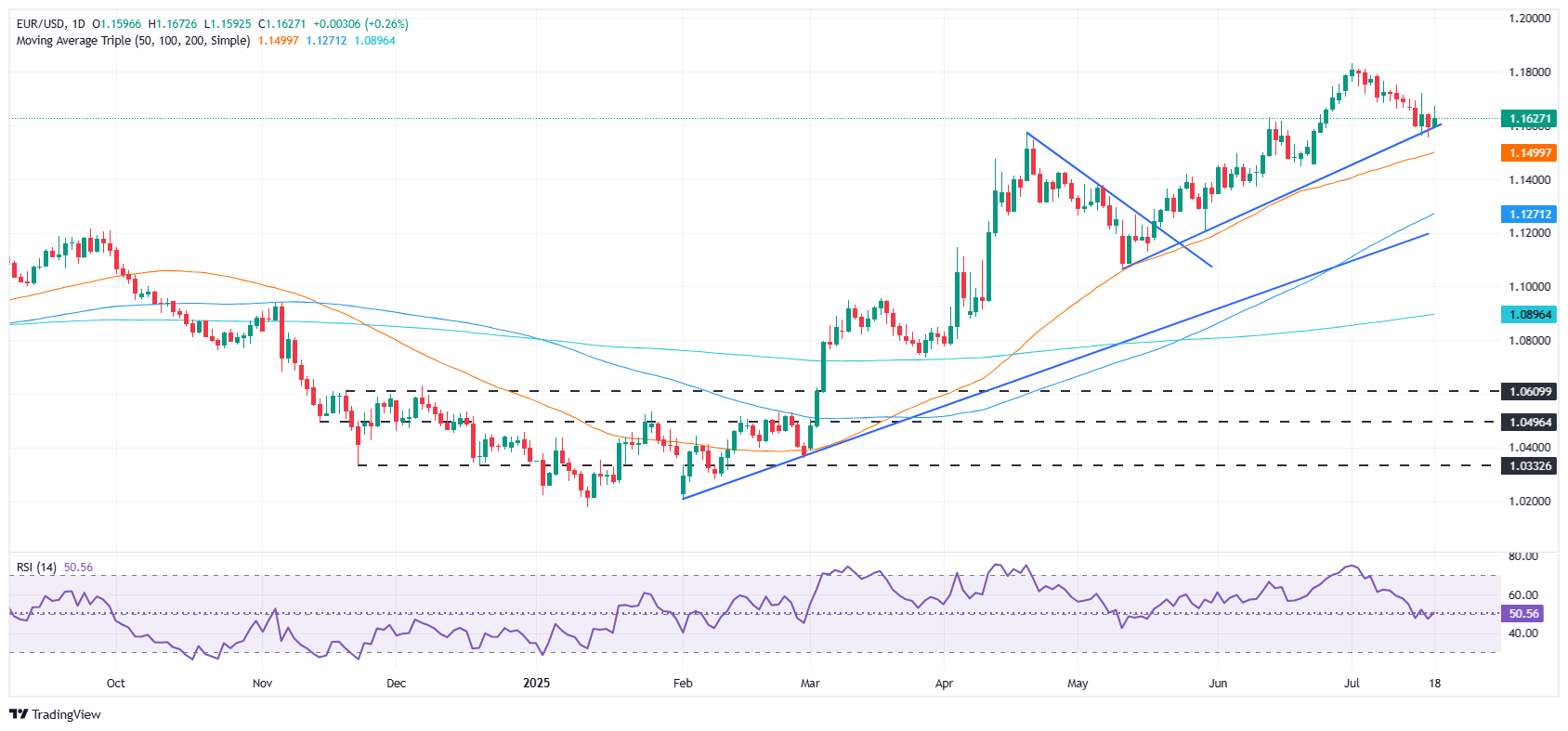
- Fed Governor Waller Advocates for July Rate Reduction, Impacting Treasury Yields and the US Dollar.
- US Consumer Sentiment Rises, Inflation Expectations Decline According to UoM Survey.
- Key Economic Events: ECB Decision, EU and US PMIs, and US Economic Indicators to Watch This Week.
The EUR/USD closed Friday’s trading session up by 0.26%, influenced by a weaker US Dollar after dovish remarks from Fed Governor Christopher Waller, which pressured US Treasury yields. However, gains were limited as improved Consumer Sentiment provided support to the US Dollar, with the currency pair standing at 1.1626.
Wall Street concluded the day positively, buoyed by Waller’s preference for a rate cut in July. Nonetheless, recent statements from Chicago Fed President Austan Goolsbee, who has adopted a more cautious stance due to the latest CPI data indicating initial tariff-related inflation pressures, moderated the optimism.
Data from the University of Michigan revealed that Consumer Sentiment in July improved as households felt more optimistic about their financial futures and anticipated lower inflation rates. Meanwhile, housing market data also showed positive signs, while the European economic calendar was less eventful, with market participants looking for signals of a trade deal between the EU and the US.
Looking ahead, the EU’s economic agenda includes Consumer Confidence, preliminary PMIs for July, and the ECB’s monetary policy decision. In the US, the upcoming week will disclose housing data, S&P Global Flash PMIs, Initial Jobless Claims, and Durable Goods Orders.
Market Movers Daily Digest: EUR/USD Surpasses 1.1600 Despite Strong US Economic Data
- The University of Michigan’s preliminary Consumer Sentiment Index for July climbed to 61.8 from 60.7 in June, slightly above the forecasted 61.5. Joanne Hsu, director of the survey, noted, “Consumers are unlikely to fully regain confidence unless they see clear signs that inflation will not worsen, such as stable trade policies.”
- The survey also indicated a reduction in inflation expectations, with the long-term (5-year) outlook adjusted down to 3.6% from 4%, and the one-year expectation decreasing to 4.4% from 5%.
- Fed Governor Christopher Waller acknowledged the overall stability of the labor market but noted less robust conditions in the private sector. He expressed support for a potential July rate cut but emphasized his decision would depend on further discussions at the upcoming meeting.
- Chicago Fed President Austal Goolsbee commented that new tariffs are not conducive to combating inflation, suggesting a cautious approach to policy adjustments if inflationary pressures intensify.
- Recent US economic indicators have presented a mixed inflation scenario. The Consumer Price Index is nearing the 3% mark, while the Producer Price Index suggests easing pressures. However, unexpectedly strong Retail Sales were driven primarily by price increases from new tariffs, rather than genuine demand growth.
- Several ECB policymakers, including Mario Centeno, De Guindos, Vujčić, and Villeroy, have indicated a preference for pausing or cutting rates, with Fabio Panetta also advocating for easing due to growing downside risks to economic growth.
- Conversely, Isabel Schnabel and Robert Holzmann have argued for maintaining current rates, suggesting a wait-and-see approach until more data becomes available.
EUR/USD Technical Outlook: Trading Sideways within Key SMAs
The EUR/USD is experiencing sideways movement, maintaining a slightly bullish bias from a structural perspective. However, the Relative Strength Index (RSI) suggests a neutral market sentiment, indicating no clear control by either buyers or sellers.
Should EUR/USD breach the 1.1650 level, it would aim for the 20-day Simple Moving Average at 1.1692, potentially reaching targets at 1.1700 and 1.1800. Conversely, a drop below 1.1600 could see the pair testing support at 1.1550, followed by the 50-day SMA at 1.1497, with the 100-day SMA at 1.1266 serving as a further potential support level.









Leave a Comment